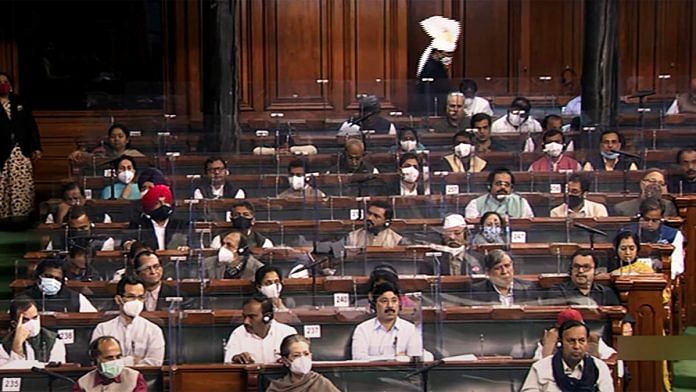Recently, the Narendra Modi government decided to raise the legal age of marriage of women from 18 to 21 years. The Union Cabinet cleared the proposal and a Bill to amend the Prohibition of Child Marriage Act, 2006, was introduced in Parliament. The Bill is likely to be passed when Parliament reconvenes next year.
In the cheer and support that the Bill has received, lies a tragedy that mockingly whispered to me that my dreams of gender equality will still remain unfulfilled. The constitution of the 31-member parliamentary panel, which will examine this Bill, speaks volumes of this tragedy. It is deplorable that Sushmita Dev is the only woman on a panel that is set to comment on the marital fate of crores of women across India.
What is gender-mainstreaming?
While gender equality is an overarching and long-term goal, gender mainstreaming is a set of context-specific approaches that can be adopted to achieve that goal. Gender mainstreaming can help identify changes that need to be effectuated in order to ensure that all genders can influence, participate in and benefit from any given process. The underlying rationale behind this concept is the recognition of the idea that women and men do not constitute homogeneous groups, but their experiences can be diverse based on several characteristics, such as age, marital status, disability, amongst others. One of the central aims of gender mainstreaming is to involve both women and men equally in any decision-making process.
In the context of legislative processes, mainstreaming would require women’s needs and experiences to be fully accounted for at all stages of the law-making process, right from the design to the final implementation of legislation. This would be especially important at the planning stage of any legislation, when the problems and concerns of the beneficiaries are identified and the ways to address them are defined. The marriage age Bill is still in its nascent stage, but will undoubtedly have far-reaching effects on society. With this in mind, I believe that it is important for its review panel to account for the needs and experiences of women, and who better to help do that than women themselves?
Lessons from history
The panel’s composition eerily echoes the underrepresentation of women in the Constituent Assembly of India, founded in 1946. Dubbed as a ‘men’s club’, the 389-member Assembly was reflective of the voices of only 15 women. The absence of women was also glaringly apparent in the various bodies of the Assembly, including perhaps the most crucial one – the Drafting Committee.
Whenever the question of women’s representation came to be raised in the Assembly, it was dismissed with sexist comments. One of the members H.V. Kamath once said, “…as regards the capability of women for government and administration, it is that a woman is ruled more by the heart than by the head, and where the affairs of Government are concerned, where we have to be cold and calculating in dealing with various kinds of men, women would find it rather awkward and difficult to deal with such persons and that the head may not play the part that it must play in the affairs of government.” Thus, the general way of thinking at the time of the drafting of our Constitution was such that it considered women as incapable of dealing adequately with the affairs of the government.
Another reason for the low representation of women in the Assembly was the fact that the members were chosen on the basis of an indirect election by the members of the Provincial Legislative Assemblies. Elections to provincial legislatures were based on criteria such as educational qualifications and gender. At that time, the female literacy rate was extremely low (around 7.3%). Thus, it is possible that few women actually participated in the process that led to the constitution of the Assembly. However, today, the female literacy rate has almost doubled, and the number of women in both the Houses of Parliament is also steadily increasing. Then why does the gender ratio of decision-making bodies such as review panels, working groups, etc. continue to remain skewed?
We must also note the lack of representational intersectionality that the Assembly was riddled with. The idea of representational intersectionality seeks to explore the link between gender, race, caste, etc. Out of the 15 women, only one belonged to the Scheduled Caste and only one was a Muslim. The Bill in question aims to apply across all faiths by overriding any personal laws. In light of this, gender-mainstreaming the parliamentary panel shall not be sufficient. Considering the broad spectrum of the targeted population, the composition of the parliamentary panel needs to be reconsidered through the lens of representational intersectionality. We should not allow history to repeat itself.
Ishika Garg is a student of National Academy of Legal Studies and Research [NALSAR], Hyderabad. Views are personal.







